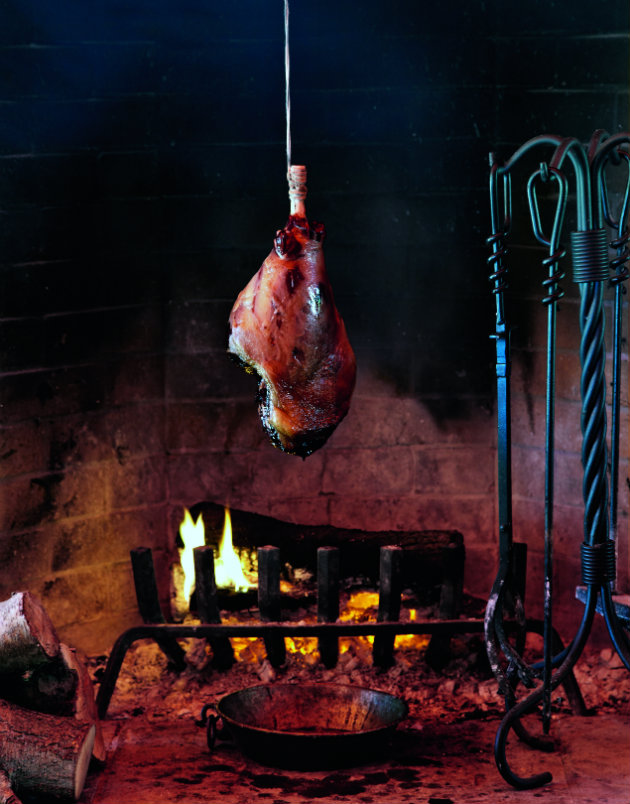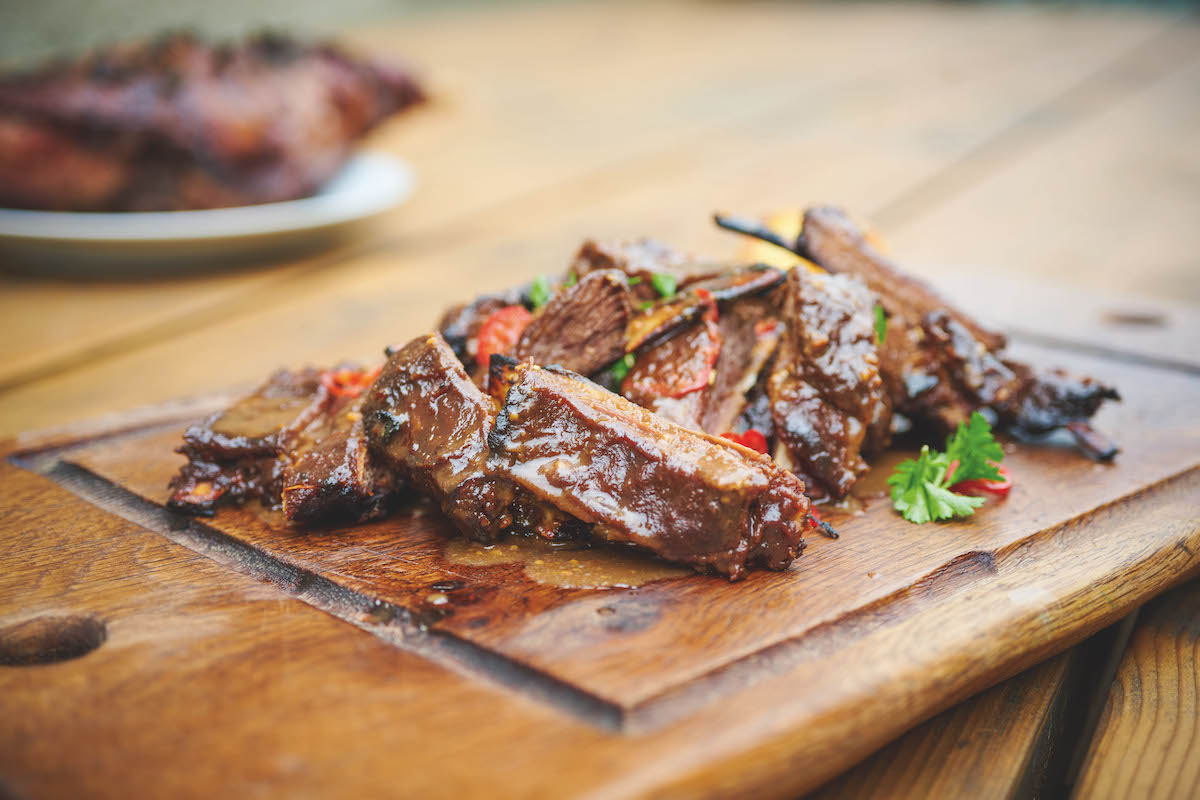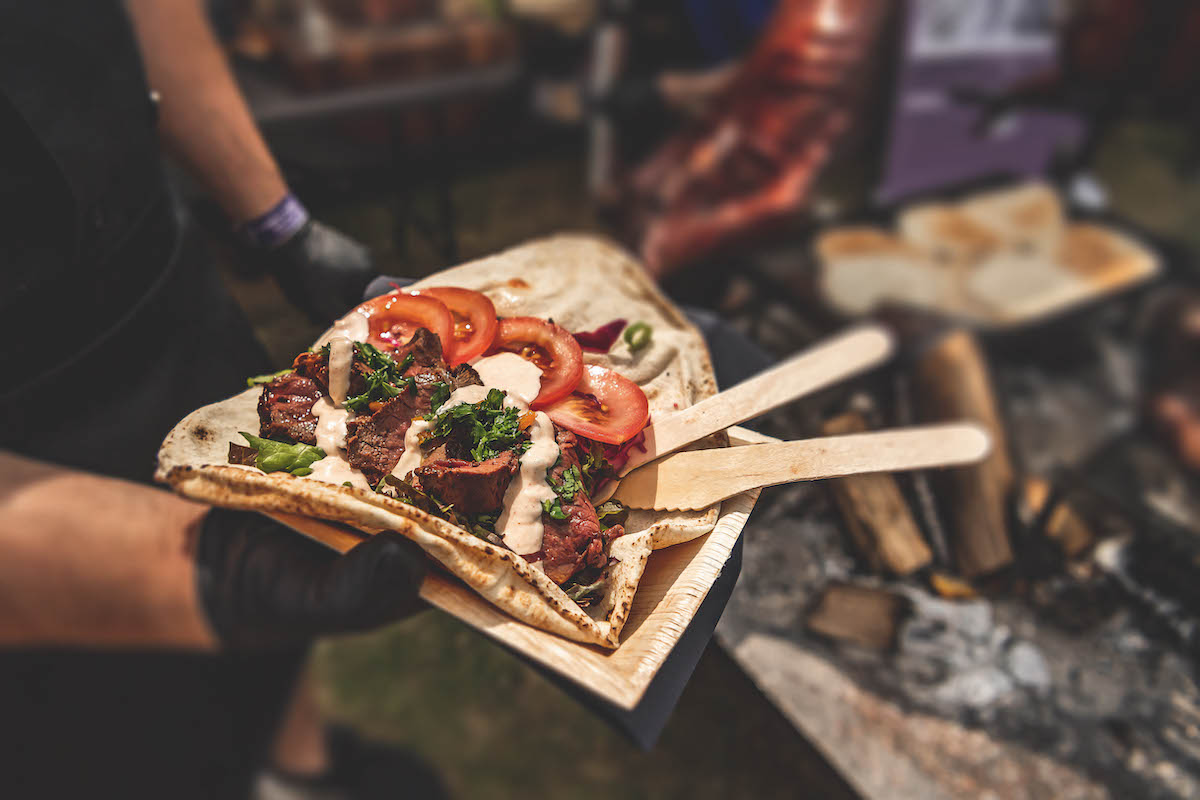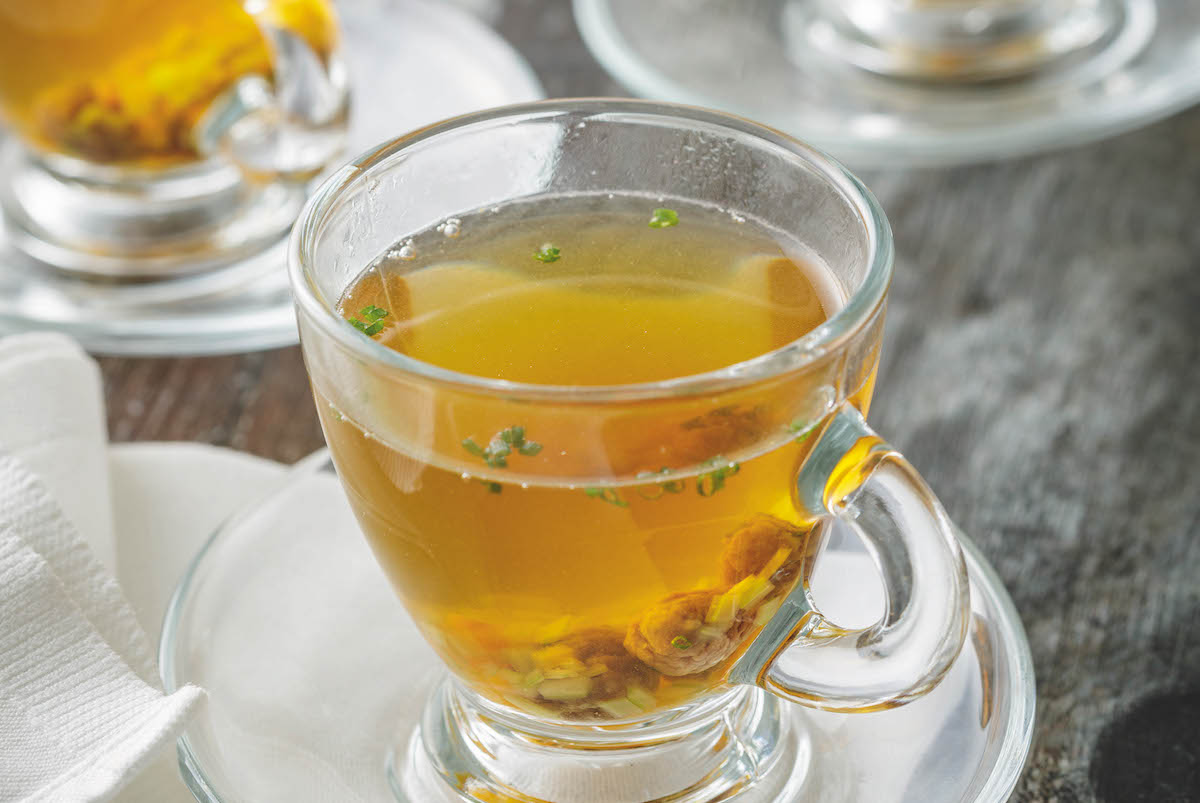Leg of venison on a string
You'll need a big log-burning fireplace for this one and you'll have to set up a hook beneath the mantel.

This is one of the venison recipes in Wild Gourmet, by chef Michael Chiarello. We’ve adapted it slightly.
As Mr Chiarello puts it: “The meat is suspended from the hook and the leg spins slowly while it cooks. Every time you pass, give it a gentle push so it spins. The venison will spin until the string is unwound then, due to the meat’s weight, will keep spinning in the opposite direction until it reaches full twist and begins unwinding.”
Remove the pelvic bone, but keep the leg intact and scrape the thin end of the bone clean so that you can tie the string on to it. The venison should be at room temperature, so take it out of the fridge at least two hours before cooking.
Ingredients
1 leg of venison
3 cups of water (a US cup measure is about 8 fluid ounces capacity)
2/3 cup rough salt (sea or rock, but not fine)
½ to 1 cup pesto (home-made if possible. The original recipe calls for mint pesto, so you could substitute mint and parsley for the basil or try it with mint sauce)
Method (serves 6-12)
- Once the venison is at room temperature, start a fire in the fireplace. Allow the fire to burn until the flames have died down and the glowing wood provides a steady, even heat.
- For the saltwater solution: fill a medium saucepan with the water, add the salt and bring to the boil over a high heat.
- Turn off the heat and allow the solution to cool. When it’s cool, transfer it to a spray bottle and have the bottle handy on the hearth.
- Trim any excess fat off the venison and discard (this probably only applies to sika, with our lean species).
- Tie a 2ft long piece of butcher’s twine or kitchen string securely around the bone at the end of the venison leg. Test it to make sure it will hold the venison’s weight. Tie the other end of the twine to a fireplace hook so the venison is suspended; the bottom of the venison should be between 8in and 12in above the fire.
- Place a pan measuring at least 9in by 13in underneath the venison to catch all the drippings
- The leg will begin to spin; give the heel a twist in the direction in which it is turning. Every 10 minutes or so, check to see if the venison is turning on the string. If it’s not, give it a gentle push so that it spins.
- After about 15 minutes, begin to baste with the saltwater solution every 5 to 10 minutes, spraying the venison all around.
- Feed the fire from both sides (but not from the front), pushing the wood to the centre as it burns. Don’t add any more wood, but let the flames die down so that the embers are cooking the venison.
- After 90 minutes, baste the venison with some of the pesto/sauce.
- The venison will roast for between 1 and 2 hours for a 6lb leg and 2½ hours for a 12lb leg. Test when it is cooked by inserting an instant-read thermometer in the thickest part of the leg, but don’t let it touch the bone. For medium-rare meat, the temperature should be about 130°F.
- Transfer the venison to a platter, cover lightly with aluminium foil, and let it rest for at least 15 minutes.
With thanks to the Boone and Crocket Club








